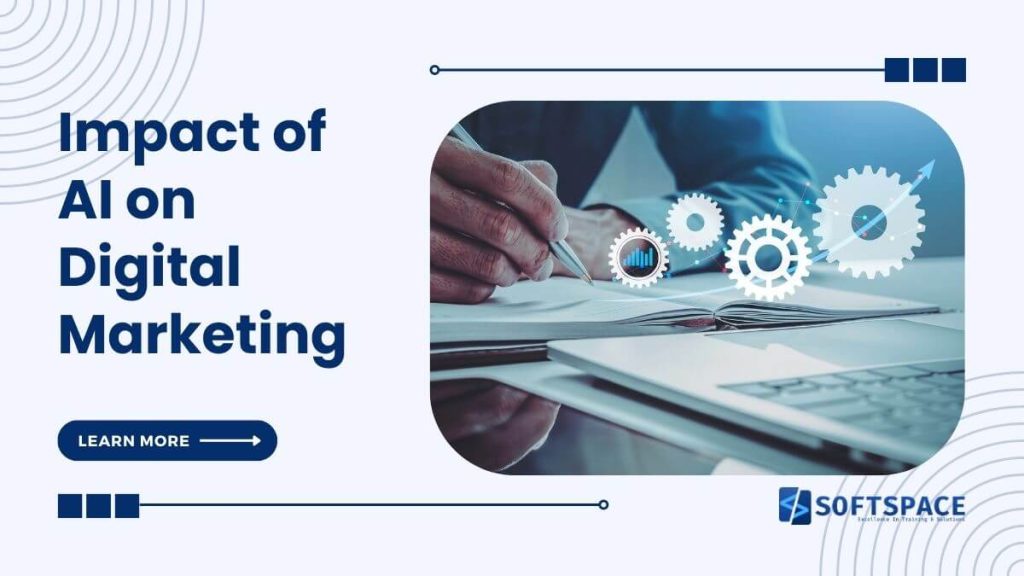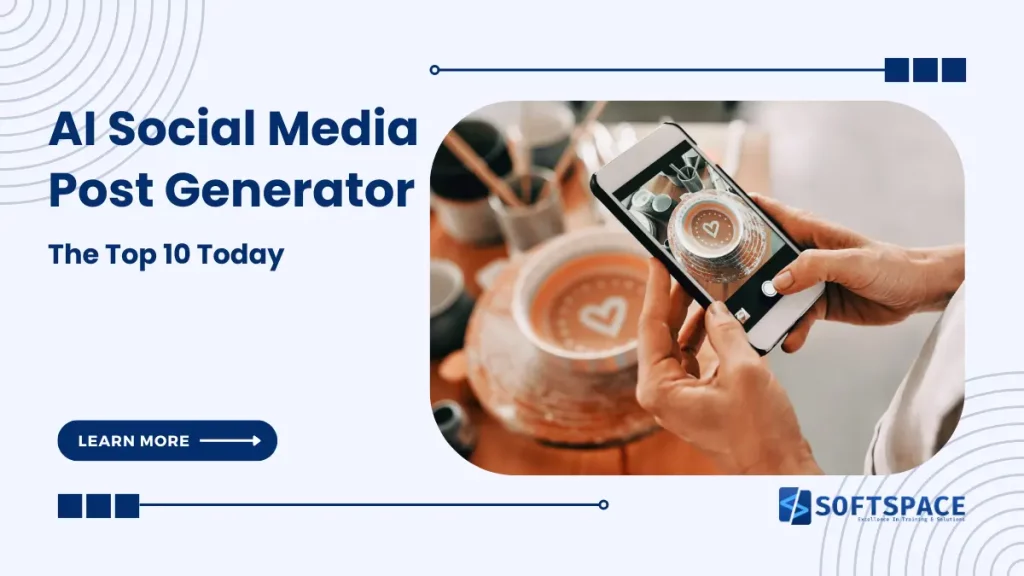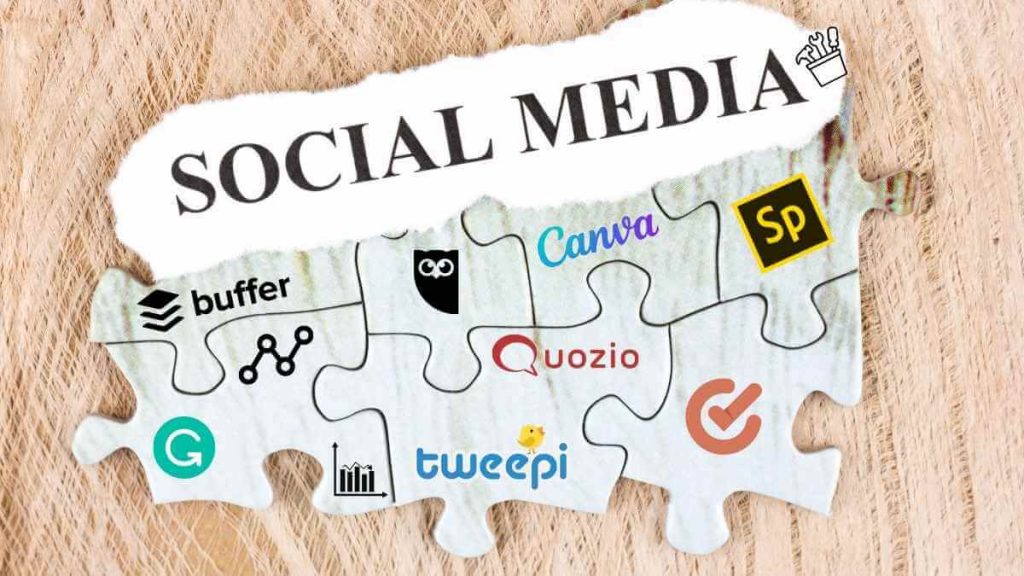As the era of artificial intelligence (AI) continues to unfold, its impact on various industries becomes increasingly evident. In the realm of digital marketing, AI is poised to revolutionize the way businesses engage with their audience, optimize strategies, and execute campaigns.
This article explores the profound impact of AI on digital marketing, highlighting its potential applications and how it can enhance marketing strategies and execution. By leveraging AI effectively, marketers can unlock new levels of personalization, precision, and efficiency to drive business growth in the digital landscape.
Table of Contents
Impact of AI on Digital Marketing
Before delving into the impact of AI on digital marketing, it is essential to grasp the fundamentals of AI and its role in this domain. AI utilizes complex algorithms to analyze vast amounts of data, identify patterns, and make predictions based on past experiences.
This powerful technology enables marketers to gain actionable insights and automate various tasks, ultimately enhancing productivity and performance.
By harnessing AI, digital marketers can navigate the ever-increasing data landscape, make data-driven decisions, and optimize their marketing efforts with greater efficiency.
Enhancing Customer Service with AI
One area where AI significantly impacts digital marketing is customer service. AI-powered automation provides a continuous flow of customer support, ensuring that assistance is available around the clock. Personalized experiences crafted through AI enable individualized customer interactions, fostering stronger connections and loyalty.
Furthermore, AI-driven deep insights into consumer requirements enhance businesses’ understanding of their customers, enabling them to deliver more tailored and efficient service. The optimization of productivity through AI ensures that tasks are accomplished faster, further enhancing the overall customer experience.
The following examples will give you the best idea:
- Chatbots: These AI-powered chatbots / virtual assistants offer immediate responses to customer inquiries, providing support around the clock. They handle routine queries, freeing up human agents for more complex issues.
- Personalized Recommendations: AI algorithms analyze customer preferences and behaviours to offer tailored product or service recommendations, improving the overall shopping experience.
- Voice Assistants: Integrating AI-driven voice assistants in customer service allows for hands-free interactions, offering convenience and accessibility to users.
- Predictive Analytics: AI can anticipate customer needs and behaviours based on past interactions, enabling companies to proactively address issues or offer relevant solutions.
- Sentiment Analysis: AI tools can analyze customer feedback and sentiment from various sources like social media, reviews, and surveys, allowing businesses to gauge customer satisfaction and take necessary actions.
- Language Translation: AI-powered translation services can help break down language barriers, enabling companies to communicate effectively with a diverse customer base.
- Automation of Repetitive Tasks: AI can automate routine tasks such as order processing, appointment scheduling, and basic troubleshooting, allowing human agents to focus on complex issues that require empathy and critical thinking.
- Facial Recognition and Biometrics: In certain industries like hospitality or banking, AI-powered facial recognition and biometrics can streamline customer authentication processes, making transactions more secure and efficient.
- Predictive Maintenance: For products or services that require maintenance, AI can predict when maintenance is needed, reducing downtime and improving overall customer satisfaction.
- Feedback Analysis and Actionable Insights: AI tools can analyze large volumes of customer feedback to extract actionable insights, helping companies make data-driven decisions to enhance their services.
AI in Advanced Customer Segmentation
Digital marketers often face challenges when it comes to accurately segmenting their target audience. Traditional segmentation methods may not align with the actual interests and motivations of customers. AI, coupled with machine learning algorithms, addresses this issue by sifting through massive customer datasets to reveal hidden psychographic and behavioural patterns. This is also a great career choice and a career in AI has a lot of fantastic opportunities for you.
Real-time insights and improved scalability enabled by AI and ML empower marketers to adopt agile, data-driven strategies. AI-enhanced customer segmentation revolutionizes marketing approaches, allowing businesses to tailor their campaigns to specific audience segments for maximum impact.
Advanced customer segmentation using AI involves more nuanced categorization based on various factors beyond basic demographics. Here are some examples:
- Behavioural Segmentation: AI analyzes customer behaviour such as purchase history, browsing patterns, and interaction frequency to group customers based on their actions and preferences. For instance, segmenting customers based on high-value purchases or frequent engagement with specific products/services.
- Predictive Segmentation: AI algorithms predict future behaviours and needs by analyzing historical data. This could involve predicting which customers are likely to churn, those likely to make repeat purchases, or those likely to upgrade to premium services.
- Contextual Segmentation: AI considers situational or contextual factors influencing customer behaviour. For instance, segmenting customers based on their behaviour during specific seasons, events, or changes in market conditions.
- Psychographic Segmentation: AI analyzes psychological and lifestyle characteristics to segment customers. This could involve grouping customers based on their interests, values, opinions, or attitudes toward products/services.
- Dynamic Segmentation: AI continuously updates customer segments in real-time based on changing behaviours or preferences. This dynamic segmentation allows for immediate and tailored responses to customer needs.
- Cluster Analysis: AI identifies natural groupings within a customer base, uncovering similarities among customers that may not be apparent through traditional segmentation methods. For example, identifying clusters based on purchasing patterns that aren’t directly correlated to demographics.
- Social Media Analysis: AI analyzes social media interactions, sentiment, and engagement to segment customers based on their social behaviours and preferences. This helps in targeting specific groups with relevant marketing strategies.
- RFM Analysis (Recency, Frequency, Monetary): AI applies RFM analysis to segment customers based on how recently they made a purchase, how often they make purchases, and how much they spend. This helps in identifying and prioritizing high-value customers.
Advanced customer segmentation using AI allows businesses to target specific groups with highly personalized marketing strategies, tailor product offerings, and provide customized customer experiences based on a deep understanding of diverse customer segments.
Revolutionizing UX Design with AI
AI’s impact on user experience (UX) design is significant, offering a range of powerful enhancements and opportunities. By utilizing AI algorithms, designers can extract valuable insights from user data, supporting decision-making in design processes.
AI-powered predictive models foster personalized digital products that align with individual user behaviour, enhancing user engagement and satisfaction.
Automation of repetitive tasks, such as data validation and feature creation, expedites the design process, enabling designers to focus on more creative aspects.
Additionally, AI tools aid user testing and prototyping, uncovering potential behaviour patterns for better iterations. Integrating AI and UX design opens up limitless possibilities for creative problem-solving and delivering exceptional user experiences.
The Role of AI in Targeted and Predictive Content
AI excels in content targeting, leveraging vast datasets to decode user behaviour patterns, interests, and preferences. This enables marketers to create content tailored to each individual’s unique persona, resulting in highly targeted messaging that resonates with users.
Natural Language Processing (NLP) enables AI to analyze user-generated content, distilling key themes and sentiments to inform content creation in a customized manner. Furthermore, AI ventures into predictive analytics, examining data trails such as search history, purchase patterns, and social media activity to anticipate content that users will find engaging.
AI plays a crucial role in creating targeted and predictive content, ensuring that the right content reaches the right audience at the right time. Here are four examples:
- Content Personalization: AI analyzes user data, including browsing history, past interactions, and preferences, to personalize content recommendations. It tailors articles, videos, product suggestions, and other content formats to match individual user interests and behaviours.
- Predictive Analytics for Content Performance: AI algorithms analyze historical data to predict the performance of different types of content. By understanding what content is likely to resonate with specific segments of the audience, AI assists in creating content that aligns with predicted trends and preferences.
- Dynamic Content Generation: AI-generated content is increasingly used to create personalized and targeted materials at scale. This can include generating personalized emails, product descriptions, social media posts, and even news articles tailored to specific audience segments based on their preferences and behaviours.
- A/B Testing and Optimization: AI helps in running A/B tests to determine which content variations perform better with different audience segments. By analyzing user responses in real-time, AI assists in optimizing content elements such as headlines, images, and calls-to-action to enhance engagement and conversion rates.
Ways to Harness AI in Digital Marketing
AI presents numerous opportunities for digital marketers to optimize their strategies and execution. Here are five key ways in which AI can be harnessed in digital marketing:
- Personalized Customer Experiences: AI enables the creation of highly personalized customer journeys by analyzing vast amounts of data to understand individual preferences, behaviours, and purchase history. Marketers can leverage this information to deliver tailored content, product recommendations, and offers, increasing engagement and conversions.
- Predictive Analytics for Campaign Optimization: AI-powered predictive analytics helps in forecasting trends, identifying potential leads, and predicting customer behaviours. This data-driven approach allows marketers to optimize campaigns, allocate resources effectively, and make informed decisions to maximize ROI.
- Chatbots and Customer Service Automation: AI-driven chatbots provide instant support, handling customer inquiries, guiding purchasing decisions, and offering assistance round the clock. This automation streamlines customer service, improves response times, and enhances overall customer satisfaction.
- Enhanced Audience Targeting and Segmentation: AI analyzes customer data to create detailed audience segments based on various parameters like behaviour, demographics, interests, and engagement patterns. Marketers can then precisely target these segments with relevant content and ads, improving campaign performance and ROI.
- Content Creation and Optimization: AI-powered tools aid in content creation by generating insights on what content performs best, assisting in content ideation, and even generating specific content types like product descriptions, articles, or social media posts. Additionally, AI helps optimize content by analyzing audience engagement and suggesting improvements for better performance.
- AI-Assisted Ads Optimization: AI algorithms optimize ad performance by analyzing vast amounts of data in real-time. They help marketers understand which ad creatives, copy variations, and targeting parameters resonate most with specific audience segments. This optimization process ensures that ad spending is directed towards the most effective campaigns, leading to higher conversion rates and reduced costs per acquisition.
- AI-Assisted Image Generation and Enhancement: AI-powered tools assist in creating and enhancing images for marketing purposes. These tools can generate visuals, resize images for different platforms, apply filters, and even improve image quality. AI-based image recognition helps in automatically tagging and categorizing images, making it easier for marketers to manage visual content efficiently across various marketing channels. This technology also enables the creation of personalized visual content at scale, catering to diverse audience preferences.
Debunking the Myth of AI Stealing Digital Marketers’ Jobs
Despite concerns that AI may replace human marketers, the reality is that AI serves as a valuable tool rather than a threat. AI can automate tasks, analyze data, and provide insights, but it cannot replicate human creativity, intuition, and strategic thinking. Human marketers bring unique perspectives, emotional intelligence, and cultural understanding to their work, which are critical in creating impactful campaigns. The successful integration of AI and human expertise is key to maximizing the potential of AI in digital marketing.
Best Practices for Utilizing AI in Marketing
To effectively utilize AI in marketing, it is crucial to strike a balance between AI and human intuition. AI should be used in combination with human insights and perspectives to create compelling and engaging campaigns.
Defining the role of AI, evaluating the complexity of tasks, and considering the impact on the customer are important factors in determining the optimal use of AI. You can start by optimizing the following tasks and activities with AI:
- Data Quality and Integration: Ensure high-quality data collection and integration across various sources. Clean, accurate, and diverse datasets are essential for AI algorithms to provide meaningful insights. Integrate data from CRM systems, social media, customer interactions, and other sources to gain a comprehensive view of your audience.
- Testing and Learning Culture: Foster a culture of experimentation and continuous learning. Test AI-driven strategies, algorithms, and tools regularly to understand their impact on campaigns. Use A/B testing and analytics to refine AI-driven approaches, allowing for iterative improvements and better performance over time.
- Transparency and Ethical Use of Data: Be transparent with customers about how AI is used in marketing efforts. Ensure compliance with data privacy regulations and ethical guidelines. Respect user consent and privacy while leveraging AI for personalized marketing, maintaining trust with your audience.
- Human-AI Collaboration: Encourage collaboration between AI systems and human marketers. While AI can automate tasks and provide insights, human expertise is crucial for interpreting results, refining strategies, and infusing creativity into marketing campaigns. Combining AI’s analytical capabilities with human intuition leads to more effective marketing strategies.
- Scalability and Flexibility: Choose AI solutions that are scalable and adaptable to changing marketing needs. Look for platforms or tools that can accommodate growth, handle increasing data volumes, and evolve with technological advancements. Flexibility allows for adjustments in strategies and the adoption of new AI-driven methods as needed.
Potential and Challenges of AI in Digital Marketing
While AI offers transformative potential in digital marketing, there are also challenges to navigate. Ethical dilemmas arise in content targeting, and privacy concerns regarding user data must be addressed.
The potential for biased algorithms perpetuating discrimination highlights the need for transparency and fairness in AI-powered marketing. However, when used ethically and responsibly, AI can elevate customer engagement and drive business growth.
Potential Benefits
- Enhanced Personalization: AI enables hyper-personalized marketing by analyzing vast amounts of data, allowing for tailored content, product recommendations, and targeted advertising that resonates with individual customer preferences.
- Improved Customer Engagement and Experience: AI-driven tools, like chatbots and predictive analytics, enhance customer engagement by providing real-time assistance, predicting customer needs, and delivering seamless experiences across multiple touchpoints.
- Optimized Campaign Performance: AI-powered analytics and optimization tools help marketers make data-driven decisions, optimize ad spend, refine targeting strategies, and predict trends, leading to improved campaign performance and higher ROI.
- Efficient Resource Allocation: AI automates repetitive tasks, such as data analysis and segmentation, allowing marketers to focus on strategy and creativity. It optimizes resource allocation by streamlining processes and reducing manual effort.
- Continuous Learning and Adaptation: AI systems continuously learn from data and user interactions, enabling adaptive marketing strategies that evolve with changing trends and customer behaviours, ensuring relevance and effectiveness.
Challenges
- Data Privacy and Ethics: Maintaining customer trust while utilizing vast amounts of data raises concerns about data privacy, security, and ethical use. Adhering to regulations and ensuring transparent practices becomes crucial.
- Algorithm Bias and Interpretation: AI algorithms can carry biases present in the training data, leading to skewed results. Understanding and mitigating biases while interpreting AI-generated insights accurately is challenging.
- Complex Implementation and Integration: Implementing AI technologies often requires expertise and resources for integration with existing systems. Ensuring seamless integration across platforms and departments can be complex and time-consuming.
- Dependency on Data Quality: AI heavily relies on quality data. Inaccurate or incomplete data can lead to flawed insights and ineffective strategies. Ensuring data accuracy and relevancy remains a challenge.
- Balancing Automation with Human Touch: While AI automates processes, maintaining a balance between automation and human interaction is essential. Overreliance on AI may lead to a lack of personalized human touch, affecting customer relationships.
Conclusion
The impact of AI on digital marketing is undeniable. By leveraging AI effectively, marketers can optimize their strategies and execution, delivering personalized, efficient, and engaging experiences to their audience.
AI enhances customer service, enables advanced customer segmentation, revolutionizes UX design, and empowers targeted and predictive content creation.
By harnessing AI in chatbots, image recognition, ads optimization, content creation, and predictive analysis, marketers can unlock new levels of efficiency, personalization, and precision.
While AI cannot replace human creativity and strategic thinking, it serves as a valuable tool to augment and enhance the work of digital marketers. Embracing AI in ethical and responsible ways will shape the future of digital marketing, propelling businesses to new heights of success.

13+ Yrs Experienced Career Counsellor & Skill Development Trainer | Educator | Digital & Content Strategist. Helping freshers and graduates make sound career choices through practical consultation. Guest faculty and Digital Marketing trainer working on building a skill development brand in Softspace Solutions. A passionate writer in core technical topics related to career growth.




